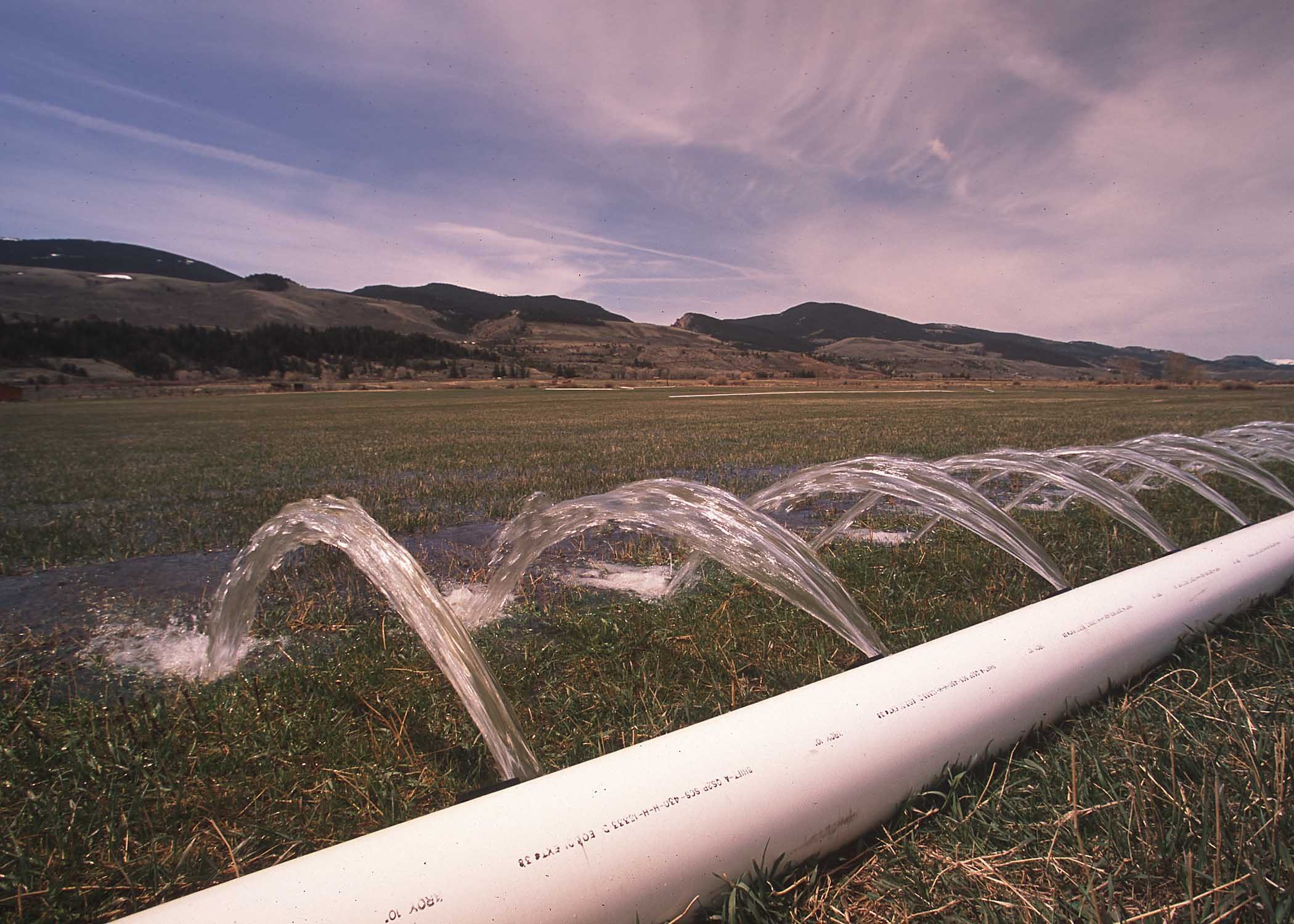- Flood irrigation generates return flows that support ecosystems and recreation.
- Three alternatives to flood irrigation were studied: center pivots, residential development, and conversion to pasture.
- Brown trout were used as an indicator species to track changes in eco-hydrology and recreational value.
- Recreational angler values are highest under flood irrigation.
June 17, 2024 — Flood irrigation is a common agricultural practice in the high-elevation mountain valleys of the Colorado River Basin. This method helps farmers and supports late-season streamflow and groundwater recharge through return flows. According to research published on June 13, 2024 , these return flows are crucial for maintaining healthy ecosystems and providing recreational benefits, particularly for fishing enthusiasts.
, these return flows are crucial for maintaining healthy ecosystems and providing recreational benefits, particularly for fishing enthusiasts.
Flood Irrigation and Return Flows.
When water is applied to fields through flood irrigation, crops do not consume all of it. The excess water infiltrates the ground and eventually returns to the rivers and streams, maintaining flow during dry periods.
Return flows help sustain wetlands and riparian habitats, which are critical for various species, including the brown trout. These habitats also support recreational activities like fishing, which in turn have significant economic value.
Alternatives to Flood Irrigation.
- Center-Pivot Irrigation. This method is more efficient than flood irrigation, with higher water use efficiency and potentially greater crop yields. However, it reduces return flows, negatively impacting late-season streamflow and groundwater recharge.
- Residential Development. Converting agricultural land to residential use significantly reduces water diversions for irrigation. While this increases early-season streamflow, it drastically reduces late-season return flows, affecting the ecosystem and recreational activities.
- Conversion to Pasture. Switching from hay production to pasture reduces water usage but similarly diminishes return flows. This change can lead to lower late-season streamflows, impacting habitats and recreational fishing opportunities.
Economic Implications.
Agricultural Value. Flood irrigation supports hay production, which is vital for local livestock operations. Transitioning to more efficient irrigation or other land uses can alter agricultural outputs and economic returns.
Recreational Value. The research measures the ecosystem’s health and recreational value by using the presence of brown trout. Flood irrigation practices help maintain higher trout populations, which attract anglers and generate substantial economic benefits.

 . The New Fork River is located on the western slopes of the Wind River Mountain range in West–Central Wyoming. There is a decrease in elevation of approximately 300 m (2400 to 2100 m) over its 110 km length from New Fork Lake to its confluence with the Green River. The Green River joins the Colorado River in Utah, approximately 1100 km downstream of the New Fork. The Green River contributes an average of 2210 million cubic meters to the Colorado River Basin per year, which amounts to 34% of the Colorado River System’s total water [24]. The New Fork is a major tributary to the Upper Green River.
. The New Fork River is located on the western slopes of the Wind River Mountain range in West–Central Wyoming. There is a decrease in elevation of approximately 300 m (2400 to 2100 m) over its 110 km length from New Fork Lake to its confluence with the Green River. The Green River joins the Colorado River in Utah, approximately 1100 km downstream of the New Fork. The Green River contributes an average of 2210 million cubic meters to the Colorado River Basin per year, which amounts to 34% of the Colorado River System’s total water [24]. The New Fork is a major tributary to the Upper Green River.Impact on Brown Trout and Recreational Fishing.
Brown trout thrive in the New Fork River, thanks to the stable late-season flows supported by flood irrigation. Changes in irrigation practices can affect their habitat:
- Flood Irrigation: Maintains high late-season flows, supporting robust trout populations.
- Center-Pivot Irrigation: Reduces return flows, potentially lowering trout numbers.
- Residential Development: Increases early season flows but reduces late-season flows, negatively impacting trout habitats.
- Conversion to Pasture: Leads to the lowest late-season flows, significantly affecting trout populations and fishing conditions.
Conclusion; Citation.
This study highlights the complex interplay between agricultural practices, water management, and ecosystem services. Flood irrigation, despite being less efficient, provides crucial benefits for ecosystems and recreational activities. Understanding these dynamics can inform water resource management decisions to balance agricultural needs with environmental and recreational values.
Blevins S, Hansen KM, Paige GB, MacKinnon A, Bastian C. Economic Evaluation of Water Management Alternatives in the Upper Green River Basin of Wyoming. Water. 2024; 16(12):1685. https://doi.org/10.3390/w16121685 Submission received: 30 April 2024 / Revised: 4 June 2024 / Accepted: 7 June 2024 / Published: 13 June 2024
Submission received: 30 April 2024 / Revised: 4 June 2024 / Accepted: 7 June 2024 / Published: 13 June 2024
Image:
Gated pipe irrigation on mountain meadows , Fremont County, Wyoming. 2002. Photo by Jeff Vanuga, USDA Natural Resources Conservation Service.
, Fremont County, Wyoming. 2002. Photo by Jeff Vanuga, USDA Natural Resources Conservation Service.


Leave a Reply